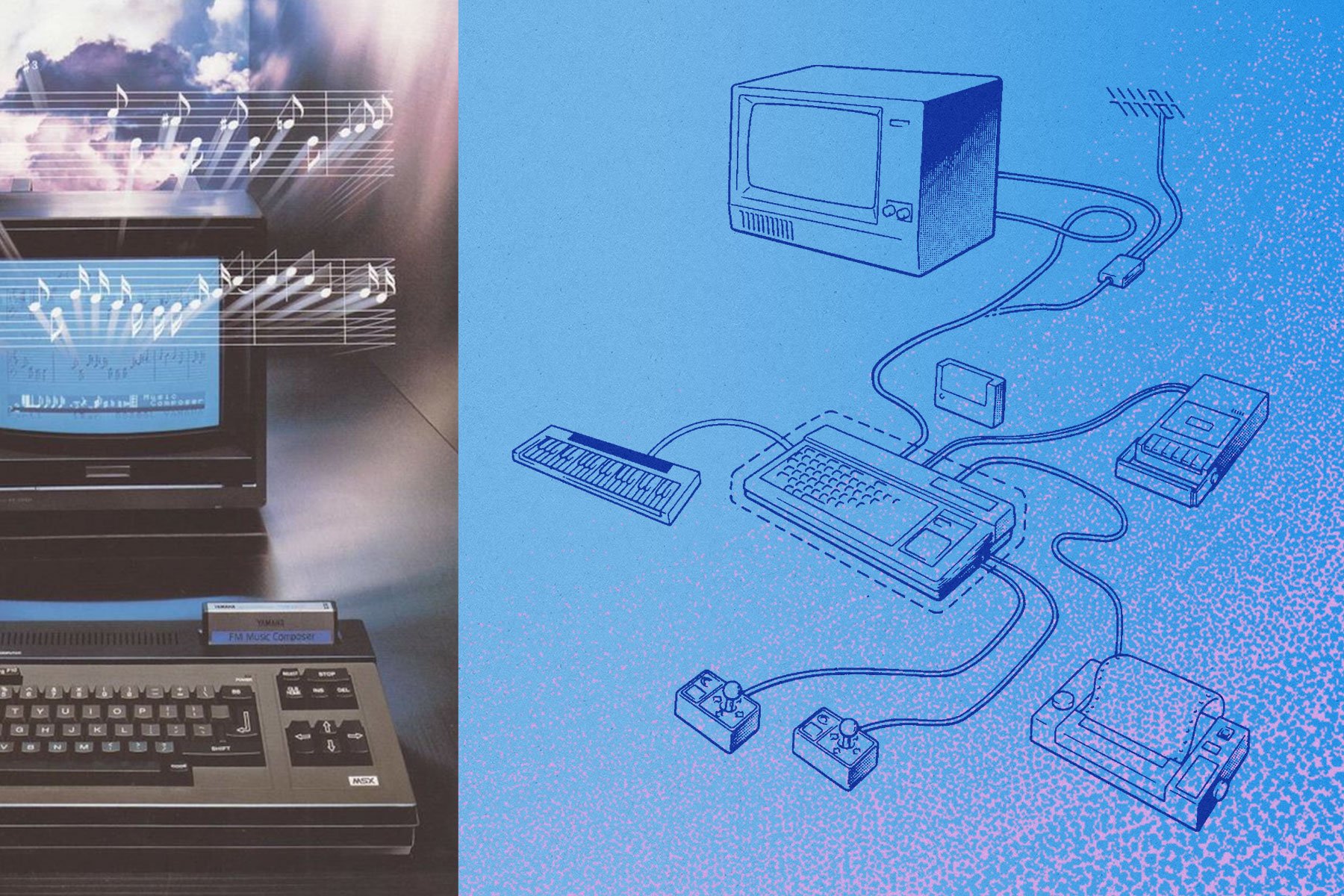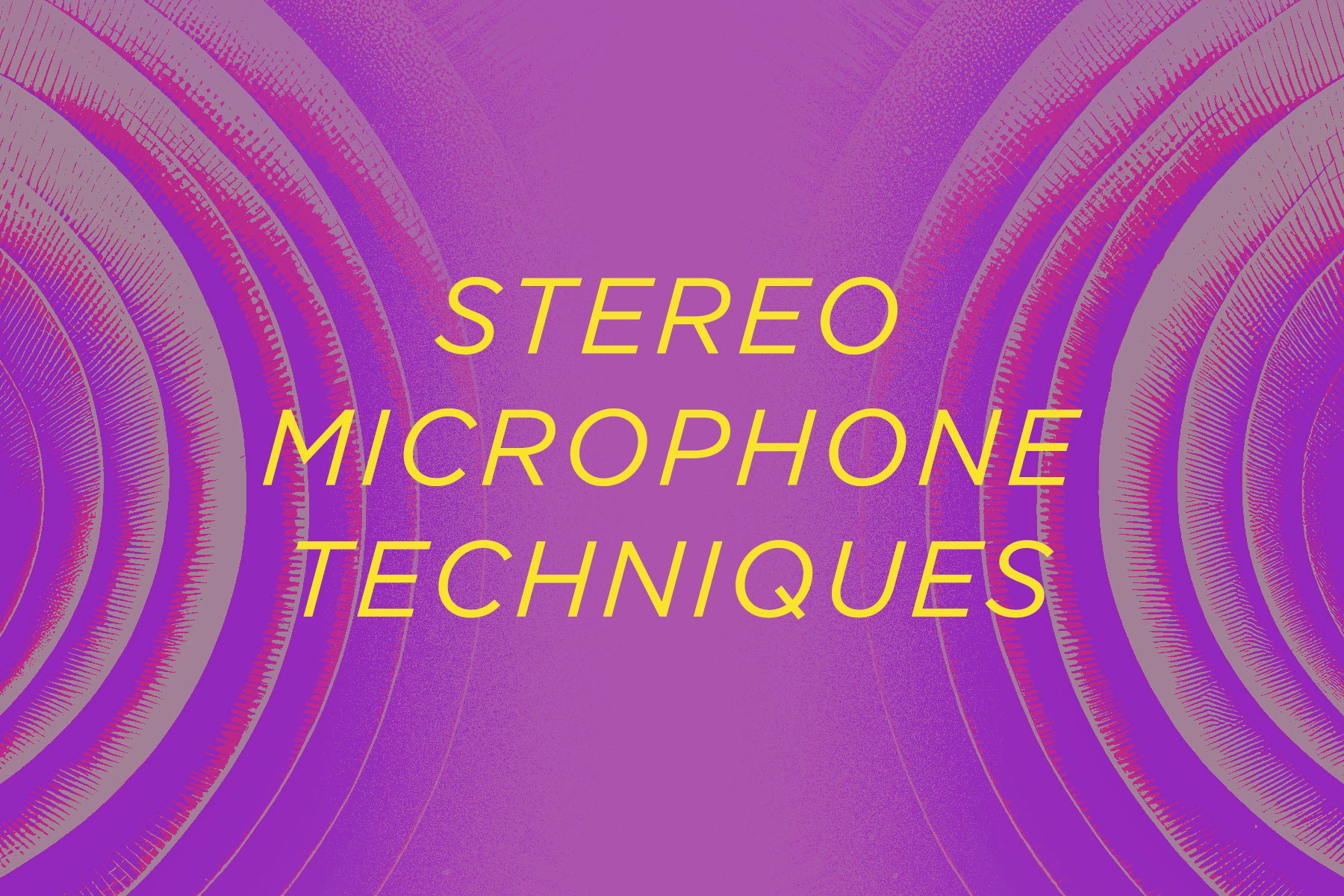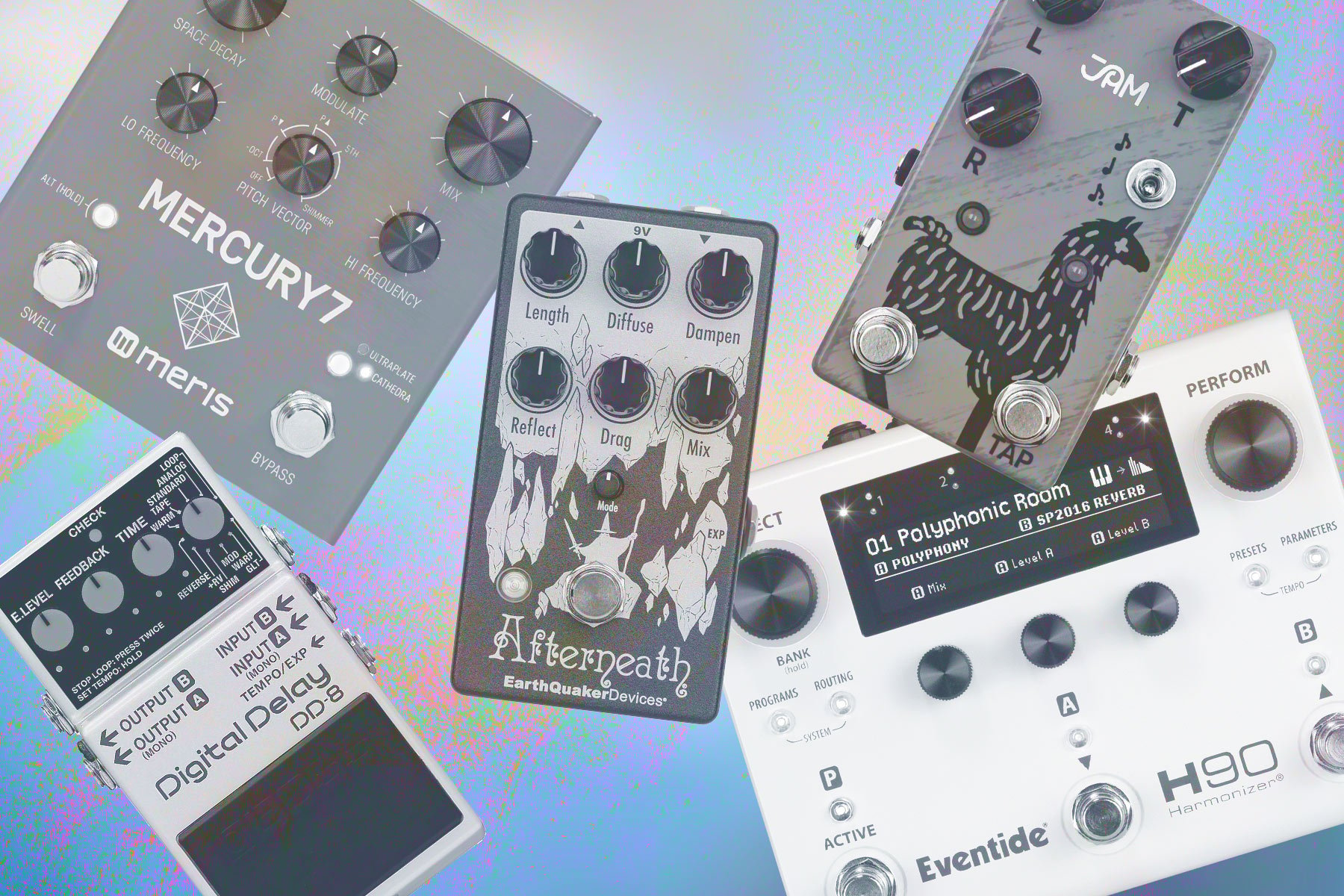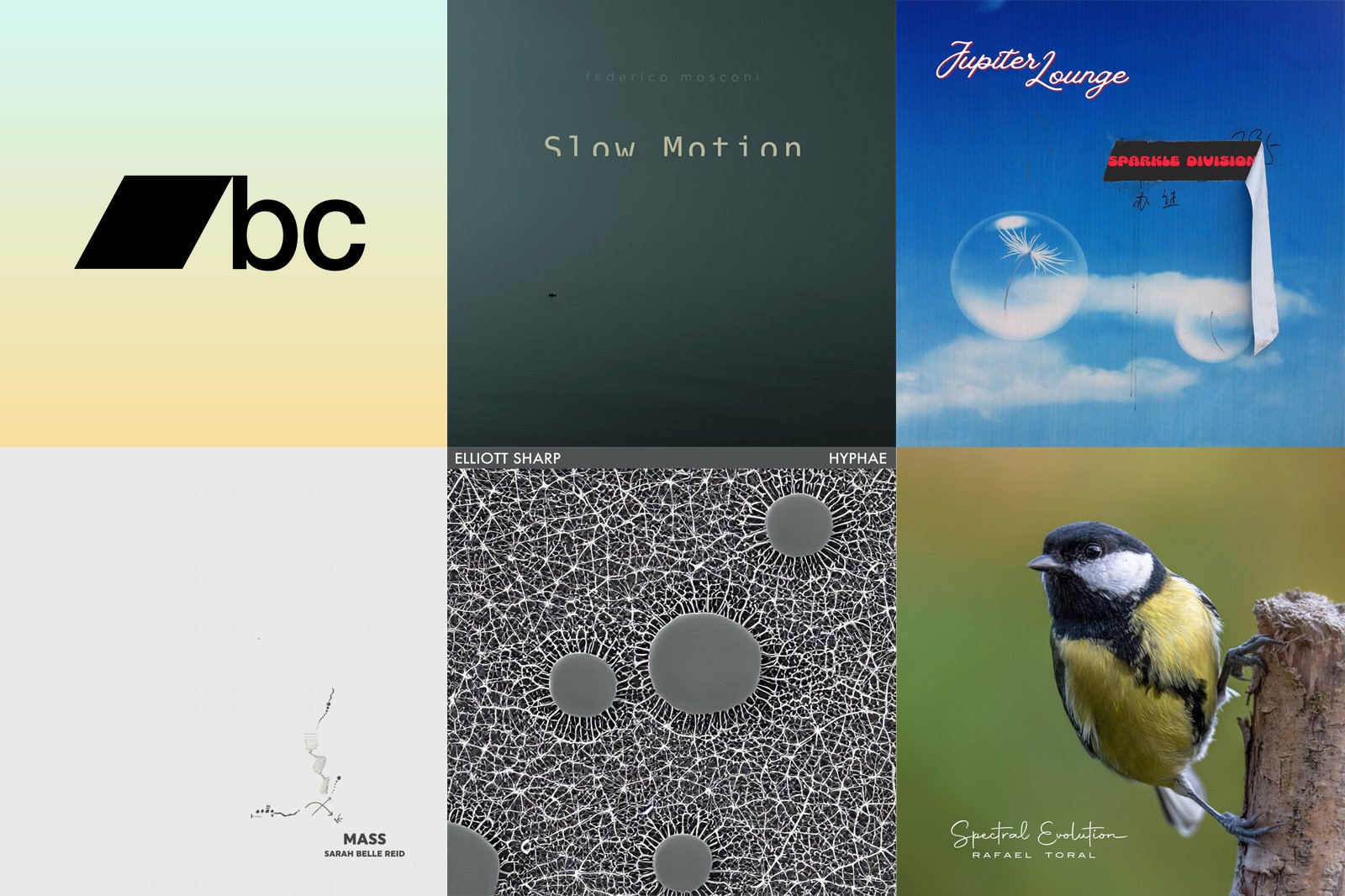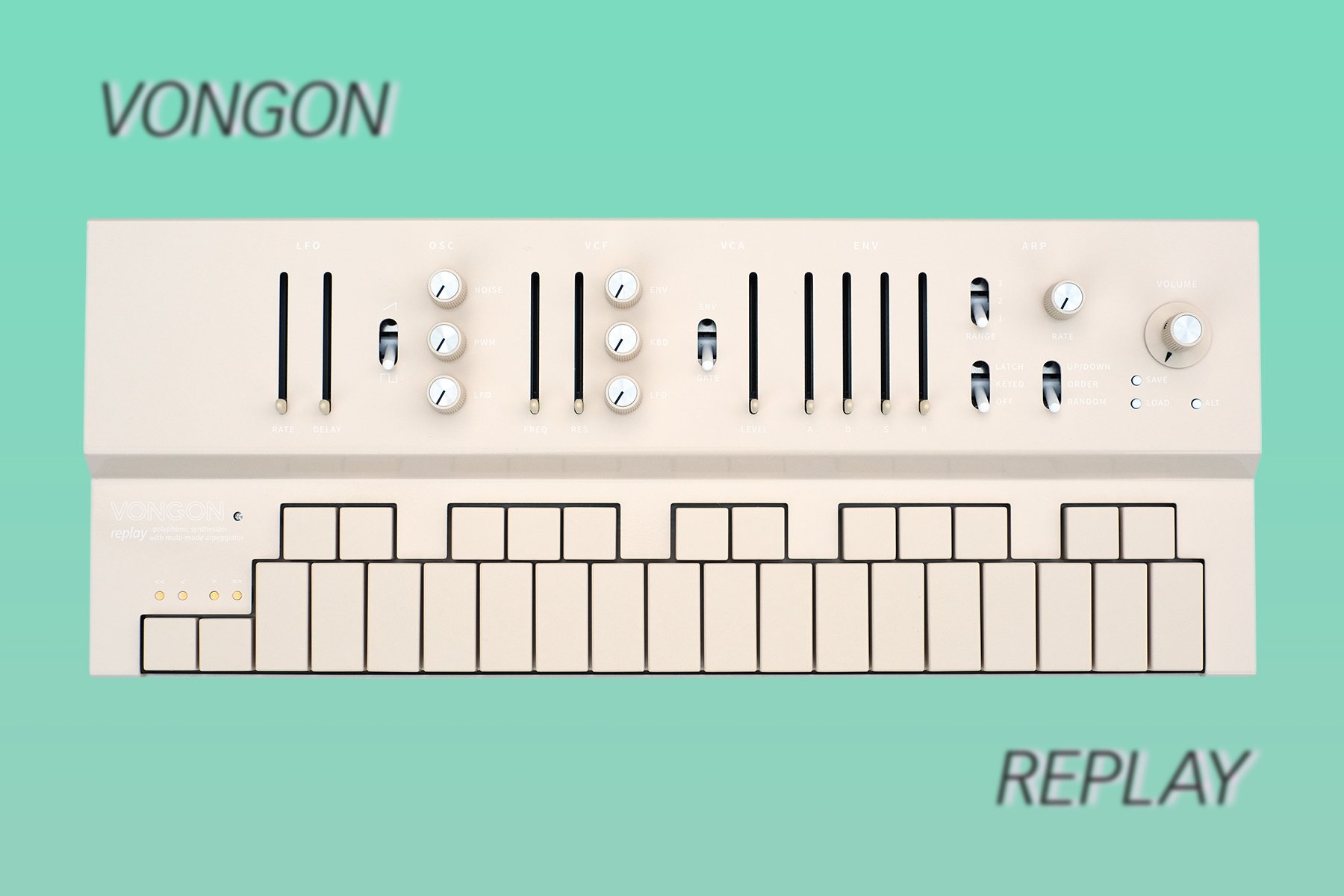With the roaring success and acclaim for the Minimoog in the early 1970s, one thing was certainly clear: many in the music world couldn't wait to get their hands on a synthesizer. Yet as a small manufacturer, Moog simply could not keep up with constant demand for their instruments, and so other makers began stepping up to the plate in hopes of filling the gap and claiming a bit of success for themselves. As is often the case with such a groundbreaking product, many of the alternatives just don't meet expectations or match the original's quality or performance. But sometimes, one appears that is just different enough to be interesting, while still managing to appeal to customers for all the right reasons.
As the initial product from a company with no prior experience building synthesizers, the Cat by Octave Electronics was a resounding success. It could match the Minimoog in bold and punchy sounds that hold their own in a full band mix, all while still captivating exploratory synthesists and providing unique features all its own.
While this article covers a bit of history and an overview of the Cat's sonic architecture, check out our video above to hear some of the sounds that went into our free sample pack, and be sure to grab the sounds yourself if you're interested in adding some of this instrument into your next track.
But before we get into talking about the Cat itself, let's spend a moment considering what the synth world was like at the time of its release.
History of the Cat
As stated just above, many makers scrambled to provide their own take on a Minimoog-esque instrument—a portable synthesizer that offered a balance between the approachability of a traditional keyboard instrument and sonic breadth of modular synthesizers. Among such instruments, the ARP Odyssey stood out, offering sounds first heard in the 2600, but without the need for patching. Not only did it offer comparable sound and performance to the Minimoog, but it also contained a unique keyboard design that facilitated duophonic playing, meaning that two notes could be played simultaneously. But in 1976, it was joined in the marketplace by another duophonic synth: the Octave Cat.
Octave Electronics was a new company with young engineer Carmine Bonanno at the helm, and the Cat proved to be a strong debut for these newcomers. It hit all of the hallmarks for a monosynth at the time: two VCOs, a rich four-pole lowpass filter, ADSR and AR envelope generators. It even boasted some clever twists on all of these sections to make it a bit more unique among its peers. Notably, the ability to cross modulate the oscillators with each other at the same time made it capable of remarkably dense and unstable textures, and its duophonic keyboard design was a major selling point. But most importantly, it had "the sound" that a lot of folks were looking for in a keyboard synthesizer—thick basses, searing leads, and more were easily achieved on the Cat.
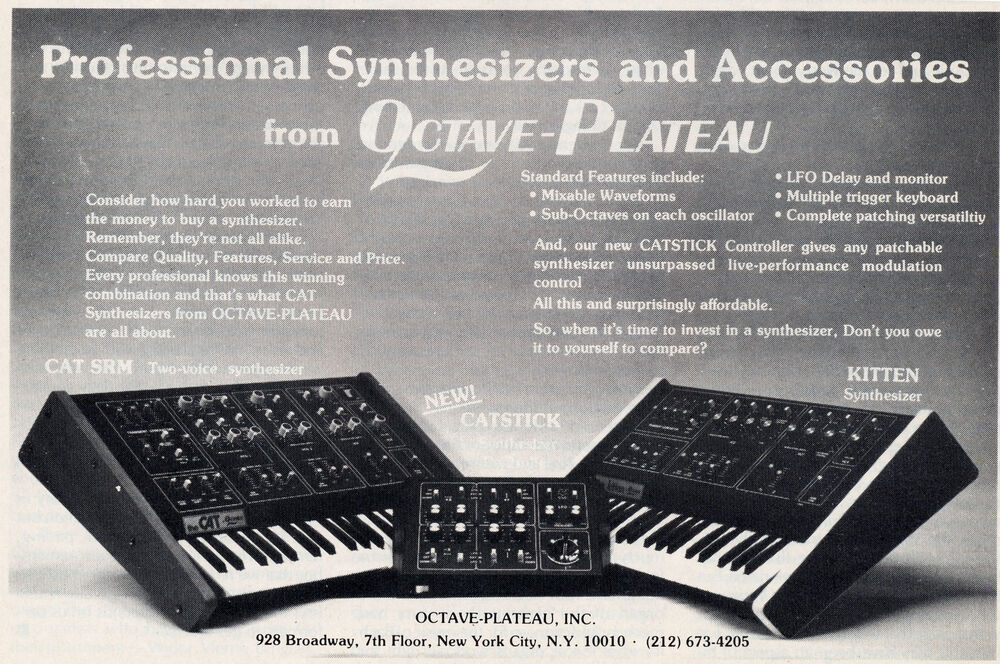
In fact, the keyboard is what brought the Cat to the center of a legal dispute between ARP and Octave Electronics. Although Octave was able to prove their design predated the patent filed by ARP, the situation nonetheless prompted a redesign. The "Series Revision Model" (SRM for short) incorporated an enhanced design for the keyboard, making use of internal sample and hold circuits to maintain the value of both notes, even after releasing the keys. The prior design would cause one of the two notes to jump to the other as soon as the player let go of the keys, so maintaining duophony on sounds with long envelope releases was effectively impossible. While they were at it, the SRM added delay to the LFO, affording the gradual introduction of vibrato or modulation into any patch, as well as an external control input for VCO 1.
Around the time of the SRM's release, Octave also released the Kitten, an aptly named smaller counterpart to the Cat featuring just one oscillator. Then by the end of the decade, another round of revisions led to the release of the Cat SRM II, which added a digital implementation of their two-note keyboard memory as well as CV and Gate outputs, before Octave decided to move on from the Cat line and on to other projects.
Dual VCOs Make For Cross-Modulation Fun
Every great synth needs a solid sonic foundation, and that's precisely what is found in the Cat's two oscillators. The design of the VCOs varies between the original and two SRM versions, relying on more discrete components early on before supposedly transitioning over to the famous CEM3340 by the time of the SRM II, but this should make no difference to most users at the operational level.

Compared to its peers, most notably the Minimoog and Odyssey, the Cat makes a distinct design departure by allowing the synthesist to blend several waveforms from each VCO, including sub oscillator outputs. Rather than selecting a single desired waveform and controlling the level of each oscillator in a dedicated mixer section, the Cat contains a sort of sub-mixer within its VCO output sections, giving it some more sonic weight despite having just two VCOs. All three synthesizers do sum their VCOs (and noise generators) before passing audio through their filter, but only does the Cat offer the ability to blend timbres to such a fine degree. Of course, this does make it more difficult to abruptly mute one or both oscillators, as only VCO 1 has a bypass switch in the filter section, but for gradual gestures and the like, the approach used on the Cat can't be beat.
Both VCOs offer similar options for waveforms and modulation, but as on most synthesizers, they do differ slightly to provide more utilitarian flexibility to the user. As the first VCO tends to be viewed as the "primary oscillator" on most synthesizers, the Cat also falls into this paradigm and provides some additional controls on VCO 1. There's a triangle wave that's not found on VCO 2, a variable-width pulse wave with an associated PWM control, a wide-ranging coarse tuning knob, and a switch to determine VCO 1's keyboard tracking: monophonic, off, or duophonic. The other oscillator contains a trimmed down selection of features, without the ability to disable keyboard tracking, but there is a switch on hand for syncing oscillator one to two for those distinctive hard-sync lead sounds.
There's a lot that the Cat provides for its frequency modulation sections found on the VCOs, making it an exceptional choice for nuanced basses and leads while leaving plenty of room to stray into more experimental territories. Like other synths available at the time, one could easily apply modulation from the LFO, sample and hold, or one of the two envelope generators. But where things get particularly interesting on the Cat is not only the option to use one oscillator as a modulation source for the other, but the ability to modulate both oscillators with the other one at the same time, resulting in chaotic instability and dense, gurgling textures when dialed in just right.
It's worth mentioning that when using one or both oscillators as a source of FM, the modulation depth knob can be used as a sort of global level control, while the sliders can be used for fine tuning the resulting timbral character.
The Beloved Lowpass VCF
Back in the days when subtractive synthesis reigned supreme, the filter section was the "make it or break it" component for any synthesizer on the market. Luckily for the Cat, its 24dB/oct lowpass filter satisfied many that dove into the world of synthesis in search of a sound reminiscent of Moog's iconic ladder filter design. They perform similarly—the steeper roll-off of higher frequencies makes both instruments adept at bass-like timbres, and dramatic sweeps on leads and melodic lines can be highly emotive. Turning up the resonance results in the ability to accentuate certain harmonics in exchange for gradually reduced bass response, until reaching the point of self-oscillation, where the filter effectively becomes a third VCO which could be controlled by the keyboard and modulated just like the other VCOs.
As with the oscillators, the original design consisted of more discrete components before transitioning to the SSM2040 in the first SRM, and SSM2044 in the SRM II. While some discerning ears could probably notice slight differences in how the various Cat models sound, the difference was mostly an effort to reduce manufacturing costs as the instrument gained popularity. Of course, one isn't necessarily better than the other, as plenty of both fully discrete and IC-based filter designs have stood the test of time in synthesizer history.
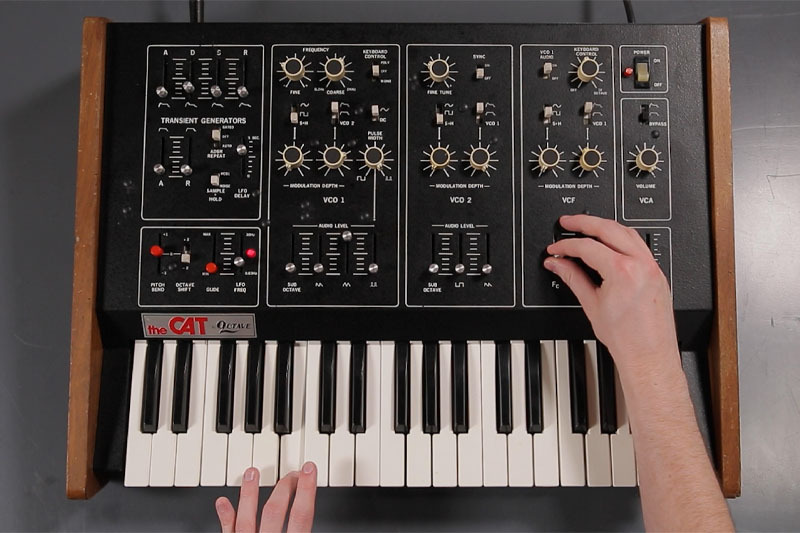
One of the more interesting design choices on the filter, that doesn't really pertain to the filter itself, is the inclusion of a VCO 1 bypass switch. When turned off, this mutes the first oscillator at the input, but this doesn't mean that it's rendered useless for your patches. This can be useful in crafting traditional FM-style patches—when using VCO 1 as the modulator and VCO 2 as the carrier, there's no way to otherwise silence the VCO 1 output via the sliders without also turning down the amount of modulation, and not hearing the modulation oscillator will make the FM timbres more prominent. Alternatively, you could set one of the VCF mod sources to VCO 1 while the audio switch is muted for some buzzy and cutting modulation on the filter. Of course, playing with this in monophonic mode with both VCOs tuned in unison, octaves, or other harmonic ratios can yield stable, harmonic results, but exploring this in the context of duophonic or inharmonic tunings makes for some truly adventurous sounds.
Upon a first glance, the modern synthesist may find the sole inclusion of a lowpass VCF rather limiting. But consider that at the time, the Minimoog and Odyssey played a substantial role in helping the synthesizer crossover from the realm of purely electronic music and into the hands of rock, jazz, and pop musicians. As such, the characteristics of the lowpass filter and how it reduces high frequency content is comparable to traditional instruments in many ways, reflecting the changes in timbre experienced by wind instruments playing at different dynamic levels or the tone controls on electric guitars and basses.
But the Cat actually has a history of being a fairly modifiable synthesizer, so much so that some service manuals listed over twenty factory modifications that could be done to enhance the instrument to the needs of its user. Some of these were fairly simple—Octave offered owners of the original Cats the option to upgrade to SRM status, changing out the keyboard circuitry and swapping out the knobs, among other things. However, if anyone found the lowpass filter too much of a sonic limitation, Octave could install a switch that toggles the filter into highpass mode, or another that provided either 12dB or 24dB/oct operation, yielding an option for more tame attenuation of harmonics above the cutoff frequency if desired.
Modulation: Transient Generators, LFO, S&H
Of course, a synthesizer solely composed of audio generators wouldn't be tremendously exciting to play, as it's the control and modulation sources that allow for really compelling sounds to emerge. The Cat contains two transient (or envelope) generators, providing the ubiquitous four-stage ADSR and the much simpler AR, as well as a simple LFO and a sample and hold.
 Signal Flow Diagram from the Cat Manual
Signal Flow Diagram from the Cat Manual
The LFO is perhaps the most straightforward—it functions just as a VCO does, but simply below the rate of human hearing, so that the wave is perceived as a movement or gesture rather than a sound. On the original Cat, it offered a lone rate control to determine the modulation frequency, but the later SRM versions added a delay that applies a fade to the onset of the LFO when a key is pressed. This can be useful for something like vibrato that's not initially present when the sound starts, but gradually comes in as a note is sustained. Unlike some other synthesizers, the modulation waveform is chosen at the destination rather than the source, so as an example, it's possible to use the LFO's square wave on VCO 2 while using the triangle on the VCF. Obviously, being one LFO they will be affected at the same rate, but having the option for contrast is appreciated.
Closely linked to the LFO is the sample and hold. This section accepts an input that is sampled at some clock rate (in our case, the LFO rate), and holds whatever value was present until the next time a trigger is received to sample a new value. For cliche synthesizer sci-fi sounds, the S&H can provide stepped random voltages when sampling the noise circuit, but it can also accept VCO 1 at its input. Using a periodic waveform at the input for a sample and hold makes it possible to craft pseudo sequences with clever relation of the VCO and LFO frequencies, and blending the various VCO waveforms will provide interesting results.
 ADSR Diagram from the Cat SRM Manual
ADSR Diagram from the Cat SRM Manual
Moog's inclusion of the ADSR envelope generator in their modular systems and on the Minimoog cemented its eternal association with keyboard synthesizers, and the Cat here is no exception. The four segments of the ADSR are broken out into dedicated sliders for easy access and visualization: Attack time, Decay time, Sustain level, and Release time. Across the Cat, it can be found as a modulation option in every section alongside the AR envelope and a VCO, with the exception of the VCA, having a bypass mode that allows it to drone indefinitely.
But like the Odyssey, the ADSR can also be used in two looping modes: AUTO and GATED. Both use the LFO rate to clock and retrigger the ADSR, but AUTO runs indefinitely and GATED is only active while a key is pressed, either way allowing this envelope generator to become something of a more shapeable looping modulation than the triangle and square waveforms available on the actual LFO.
While not as fully featured, the AR envelope is an indispensable tool in patches where the higher level of detail found on the single ADSR needs a bit of extra support. It functions just like its counterpart, only in that it's missing the decay section and a sustain level control. Thus, its signal will rise as set by the attack control to the maximum level, and remain there for as long as a key is held before releasing down to silence. While it could theoretically be nice to have dual ADSRs on the Cat, the instrument was really designed to be highly approachable, playable, and affordable, and in practice, accepting the limitations that the AR imposes to craft meaningful patches is worthwhile. As a simple example, while just assigning the AR to the VCA gives you a fairly static contour, adding the ADSR on the filter gives a secondary element of movement and interest to the sound. Blend in some vibrato or additional VCF modulation from the LFO and suddenly a patch that began so simple has become filled with nuance and expression.
Control and Interface: The Cat's Keyboard
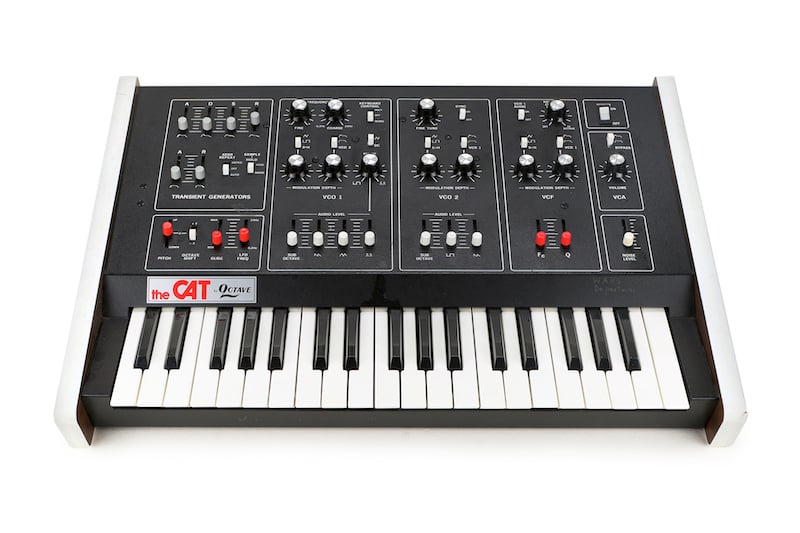
While not offering anything out-of-the-ordinary on the surface, the keyboard is probably the most immediate and important component of a synthesizer, especially when approached by someone with no prior experience in synthesis. On the Cat, 37 keys provide three octaves of musical access to the sounds within, and can be transposed up or down with the variable pitch wheel and two-octave shift switches. There's also a glide control for glissando style transitions between played notes, ranging from totally rigid to dramatically slewed.
Of course, one of the Cat's main attractions is the ability to play duophonically, or two notes at once. While it seems trivial by today's standards, this was quite a big deal in the early days of synthesizers. Instrument designers were on the cutting edge of what technology was available to them and capable of doing, and for the time being the Cat, especially the later SRM models which employed more reliable digital scanning methods, was one of the more refined methods of any kind of polyphony, prior to techniques later used by Roland and Sequential in their polyphonic synthesizers released a few years later.
After ending production of the Cat, Octave Electronics later produced the short-lived Voyetra-8 polyphonic synthesizer, an ill-fated instrument with a dense interface and released around the time of the Yamaha DX7. Moving on from synthesizers, they later became key players in the development of sound cards and musical software throughout the 80s and 90s. The Octave name didn't last long though, as through mergers and acquisitions the brand morphed several times—they were already known as Octave-Plateau around the time of the SRM II, and released a number of software applications and drivers under the name of Voyetra Technologies. After another merger, Voyetra Turtle Beach (and later just Turtle Beach) eventually transitioned to production of headsets for gaming consoles and mobile devices.
So after all these years, does the Cat still stack up to the everlasting appeal of the Minimoog and the Odyssey? With anything like this, the answer is always a bit subjective, but it goes without saying that the Cat holds its own among a whole studio full of synthesizers, and is capable of some impressive sonic sculpture. The things that can be done with its generous modulation routings, specifically in regards to cross modulation, remained untouched by most other synthesizers of a similar size and format for quite awhile, and even today the wildest sounds otherwise remain restricted to modular instruments.
Although the Cat was not based upon a condensed version of a previously existing modular system like the Odyssey and Minimoog, its flexibility in routing modulation (and audio) signals throughout the instrument is rather remarkable. Despite a design that was clearly meant to be used for playing and performing as a keyboard instrument, it can easily stray from the beaten path into more esoteric territories for sound design and experimental music purposes. And of course, it boasted a rich, killer sound that could cut through a mix and make it a worthy member of any performing keyboardist's rig, regardless of their preferred genre. Today, it remains something of a cult favorite as an alternative flavor of vintage monosynth, packing some unique tricks up its sleeve for anyone willing to put in the time to explore what it has to offer.


